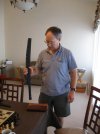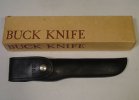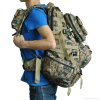@sweetcostarica:
No, me and muddog15 are not the same person. Also, I have no idea where the "millions of Southeast Asians are wrong" is coming from, as per your writing. I did not say or imply that in my response, and will not respond to that type of "argument".
I know what is practiced in the military, where the rules are written by blood, and just tried to suggest something on the forum. Khukuri in general is a dangerous tool...
I am glad you never lost a blade yet, and sure hope this never happens to you. As for myself, I will try and minimize that chance by being proactive in that regard. BTW, could you elaborate what other things can be done to secure the kuks in the field? In all your pics, it is the sheath, not the blade that is secured. Just thinking...
Both of the khukries I own are from Nepal, one is from Tora, and one is from HI. Both had lanyard holes made in them by the kamis, I did not have to drill those myself.
No, me and muddog15 are not the same person. Also, I have no idea where the "millions of Southeast Asians are wrong" is coming from, as per your writing. I did not say or imply that in my response, and will not respond to that type of "argument".
I know what is practiced in the military, where the rules are written by blood, and just tried to suggest something on the forum. Khukuri in general is a dangerous tool...
I am glad you never lost a blade yet, and sure hope this never happens to you. As for myself, I will try and minimize that chance by being proactive in that regard. BTW, could you elaborate what other things can be done to secure the kuks in the field? In all your pics, it is the sheath, not the blade that is secured. Just thinking...
Both of the khukries I own are from Nepal, one is from Tora, and one is from HI. Both had lanyard holes made in them by the kamis, I did not have to drill those myself.





